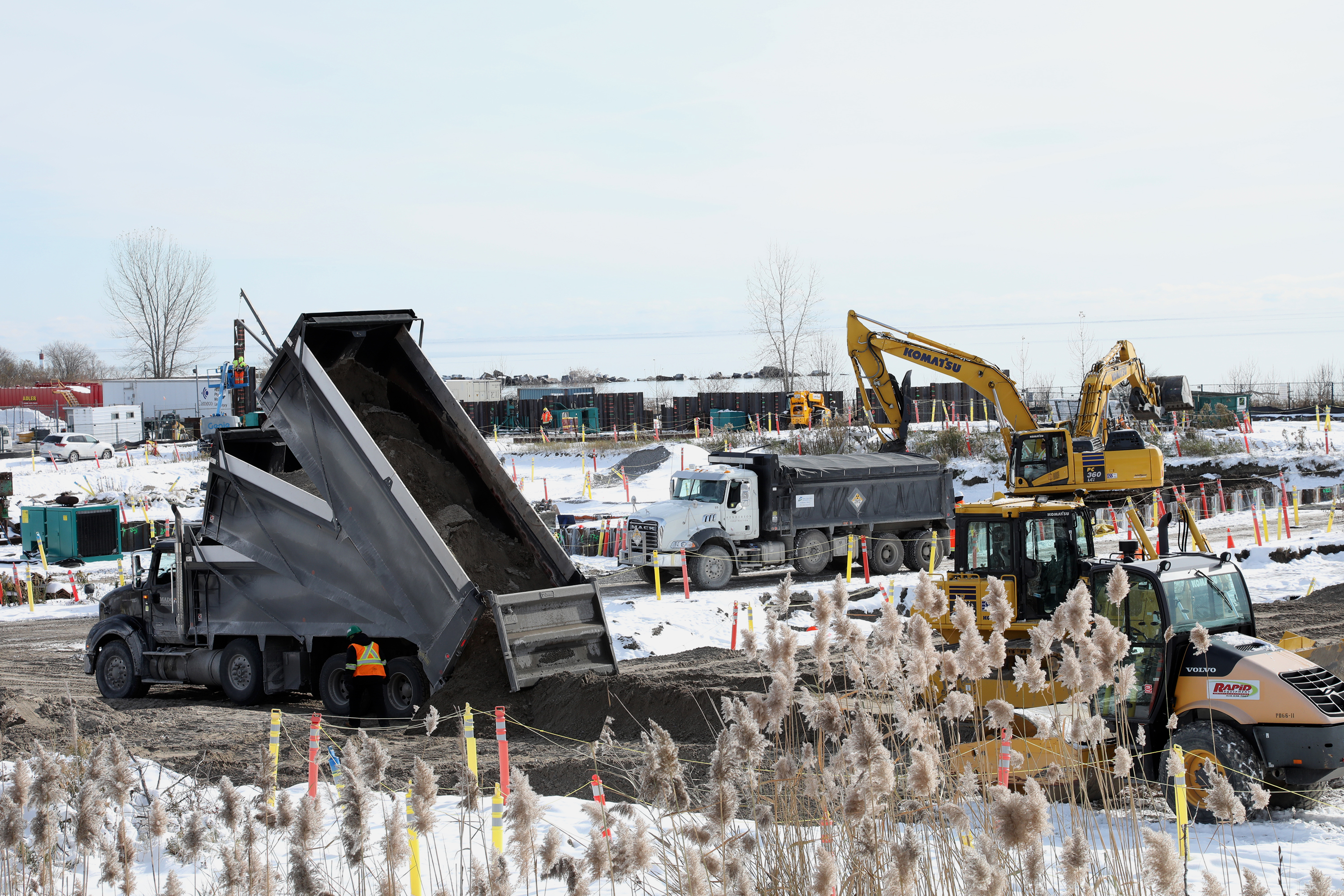In the 1990s and early 2000s I produced a series of photographic art works, exhibitions and publications about the issue of nuclear waste in the town of Port Hope, Ontario. My work from this period culminated in the exhibition and bookwork, Uranium Landscapes (see link).
In Future Mound, I return to Port Hope to document through photography, video and writing the most expensive municipal cleanup in Canadian history. With a budget of $1.28 billion in federal funding, the cleanup of radioactive waste in Port Hope is expected to take a decade or more to complete. It includes plans to consolidate an estimated 75,000 truckloads of radioactive “historic” waste (these wastes were generated by Eldorado Nuclear Ltd. and predate Cameco’s ownership of the plant in 1988) from Port Hope in an engineered above ground mound. An additional 50,000 truckloads of radioactively contaminated material will be dug up and moved to another above ground mound near a former nuclear dump in the hamlet of Port Granby in the neighbouring township of Clarington.
The mound site in Port Hope is approximately three kilometers from the plant. Located just south of Highway 401, the mound when filled and capped is expected to stand seven stories tall and be visible to all travellers on the country's main transportation artery – a towering monument to Canada’s participation in the nuclear era.
Radioactive materials decay slowly in time resulting in inconceivable time spans for radioactive waste. For example, Radium 226, a material found in the soil of Port Hope has a half-life of approximately 1600 years. This means that it takes that long for it to loose half of its radioactivity. The nuclear mound to receive these wastes in Port Hope is designed to last 500 years. The “Future Mound” documented in this project announces the existence of a long-term consolidation mound that will extend into the distant, pragmatically forever, future.














